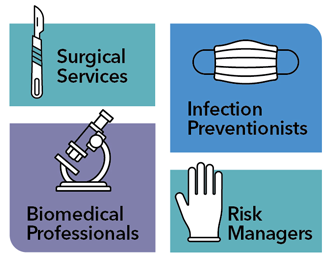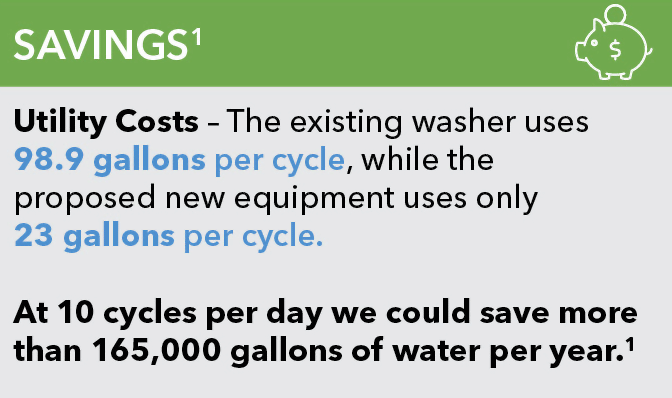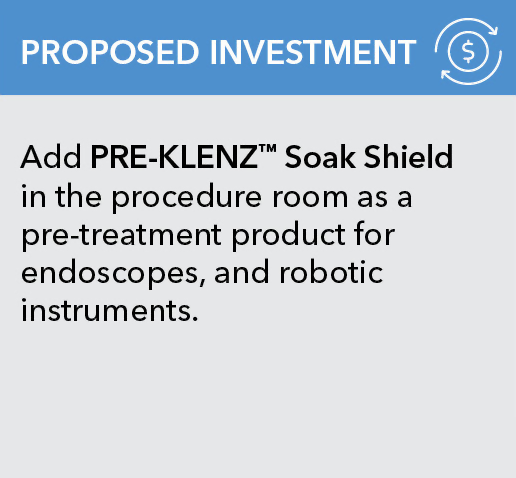Capital Budgeting in Sterile Processing
Presenting a Business Case for Improvement Projects

Gaining approval for capital improvement projects in hospital sterile processing departments (SPD) can be challenging. It is important for Department Managers to focus on highlighting the benefits this capital investment will have throughout the facility – from increasing efficiency in the SPD to providing the support needed for the OR.
This article guides department managers on how to alter their approach to craft and present compelling business cases for necessary improvements, focusing on key factors important to the budget approvers.
To effectively present a business case, managers must first understand and articulate key financial concepts:
- Capital Expenses vs. Operational Expenses: Capital expenses are significant, long-term investments in equipment or infrastructure, whereas operational expenses are the ongoing costs of running a department.
- Liability Costs: Potential costs arising from legal liabilities or non-compliance with standards.
- Cost Avoidance: The practice of reducing future costs (i.e., liability or added labor costs) by taking preventive measures.
- Return on Investment (ROI): ROI measures the profitability of an investment. It includes hard savings (tangible, measurable dollars) and soft savings (intangible benefits like reduced labor and increased capacity).
Tips for Building a Business Case
The primary steps for constructing your business case include research, preparing, and delivering. You will gather supporting information during your research, including historical data, costs, and savings. When preparing your business case, you'll need to organize all these thoughts into a logical story, allowing you to present the case compellingly. While each organization may have standards for presenting a request, you can use these tips to develop your proposal.
Provide Data
Business decisions are made by weighing evidence and choosing a path forward. To make your case for a project, start with measurable data. Utilize your surgical instrument tracking systems or manual logs to gather data on workflow, time costs, such as how long it takes to complete a task, potential utility costs/savings, and maintenance costs. Project any hard and soft savings to explain the proposed improvements' financial benefits over time.
Include Hard Data and Soft Data
When developing a business case, hard cost savings are easily quantifiable. These include costs like reduced maintenance or utilities. Soft savings can be measurable but are more speculative. These include improved workflow, enhanced employee training or retention, and increased overall capacity or throughput.
Hard Savings, Example
1 https://www.steris.com/healthcare/knowledge-center/sterile-processing/hidden-cost-of-your-aging-washer
Soft Savings, Example
Source: https://www.steris.com/healthcare/products/endoscope-reprocessing/endoscope-point-of-use-pre-cleaning/pre-klenz-soak-shield
Some investments primarily focus on hard or soft costs. If possible, both types of savings should be highlighted to build a stronger case. For example, when replacing a washer/disinfector, faster cycle times would result in increased throughput and save money on utilities per cycle.
Provide Evidence

Use photos, medical device instructions for use (IFU) requirements, and documented failure incidents to support your case. For example, if you are proposing a replacement piece of capital equipment due to increasing maintenance costs or downtime – document and reference an incident where downtime occurred. Include facts such as if surgical instruments needed to be reprocessed, costing labor. Were procedures delayed, and did staff need overtime to make up for backlogs? Show photos of the backlog created, including trays piling up and waiting for processing. Try to assign a total cost to this incident and note its frequency of occurrence.
Leverage your hospital's instrument tracking software to gather relevant data. Document any potential costs and illustrate how new investments can reduce these costs.
Include Allies from Other Healthcare Departments

Collaborating other departments can help identify possible future bottlenecks and needs, strengthening your case. Contact partners including surgical services, infection preventionists, risk managers, and biomedical professionals. These stakeholders can provide valuable insights and data to support your business case.
If surgical services have increased procedure volumes or added new procedures requiring specialized instruments, assess and document what is needed to support these changes. Consider data on supply and demand, such as procedure volumes (demand) versus processing capacity (supply). Use cycle times and staffing hours to help calculate supply.
When seeking to replace existing capital equipment, collaborate with your biomedical and service teams to include repair history and life expectancy data.
Present the Risks

While most approvers will understand immediate cost savings, highlighting the risk of not approving costs will reinforce the importance of your proposal. When presenting risks, the goal is to make the invisible visible. Consider liability costs and cost avoidance strategies, such as how this new investment could prevent expenses or more serious risks, such as legal or regulatory compliance. Remind of the need to align with industry standards and uphold credentialing (i.e., The Joint Commission) requirements to underscore the urgency of the improvement project.
Get Your Vendors to Help
Engage with your vendors to support your business case. Not only can they provide upfront costs of the investment, but they can also help with providing recurring and maintenance costs to help build your "total cost of ownership" story.
Ask your vendor the following questions:
- Can you help me build a financial case for buying your new product or replacing my old equipment with your newest model?
- Do you have photos, IFUs, or case studies that support the need for this expense?
- Can this replacement aid with compliance audits?
- How can this investment help us meet our patient care needs?
If you need assistance gathering the necessary data, STERIS offers SPD consulting and performance improvement services. Our team of clinical and lean experts can help identify and evaluate gaps in your sterile processing operations, helping you gain knowledge and paths to efficiency to ensure your facility meets or exceeds your goals and clinical and regulatory compliance.
Learn more about our Sterile Processing Consulting and Performance Improvements
Formalize and Present Your Business Case
When you're ready to formalize your business case, the key facts, evidence, costs, impact, and other areas of the proposal should all have been established. Some organizations require a presentation to receive requests, while others only want a written proposal submitted.
Overall, you can structure your business case using the following format:
- Situation (Problem): Clearly define the current issue
- Background (How did we get here?): Provide context and historical data
- Assessment (How did you research or back up your case?): Detail your research, data collection methods, and supporting information
- Solution (Your recommendation): Present your proposed solution
- Investment & Return on Investment: Include detailed cost estimates and ROI calculations
- Cost of Inaction (Risks): Highlight the risks and costs associated with not acting
Example Business Case
Below is a short example of a business case structure. Typically, a business case will take much longer and include additional details like overall project timing, implementation approach, and project management plans. The following section is intended to give an example of the above concepts.
 |
The expanding volume of robotic instrument procedures has caused backlogs in sterile processing and procedure delays. |
 |
Over the past two years, we have recorded a 35% increase in robotic instrument inventory. Surgical services confirm a 25% year-over-year increase in procedure volumes. We have purchased two additional robotic systems and plan to hire two more doctors specializing in robotic procedures next year. |
 |
Current staffing and washer/disinfector capacity show we cannot meet next year's projected procedure volumes. Robotic instrument IFUs require multiple steps. Two of our current washer/disinfectors are nearing the end of their expected life, with repair costs increasing by 20% over the past three years. |
 |
Replacing our two aging washer/disinfectors with one AMSCO® 7052HP Washer/Disinfector will increase overall capacity with shorter cycles and offer the exclusive RAS Cycle for processing robotic instruments. |
 |
The attached capital replacement project costs detail the expenses. The ROI includes hard cost savings of $7,183 over five years. Soft cost savings include improved productivity, with a 25% reduction in manual cleaning time per set of four instruments and a 66-minute decrease in direct labor time per set of four instruments. The automated cycle also ensures consistent outcomes using a validated process. |
 |
Immediate risks include delayed procedures, additional direct labor needs, and inconsistent compliance with IFUs. Future risks include the inability to meet procedure demands within three years. |
Getting Approval

Sterile processing departments are often seen as cost centers, making it challenging to justify additional investment. Establishing the foundation early, providing a proposed solution, and backing up your case with data can help you gain approval. Highlighting the benefits of the proposed improvements in patient safety, liability prevention, and cost savings can help secure the necessary approvals for capital improvement projects in sterile processing departments.
Developing a well-structured business case can shift the perspective from "expense approval" to "project approval." Your next steps: bring this all to life for your specific business case and get that approval!



















